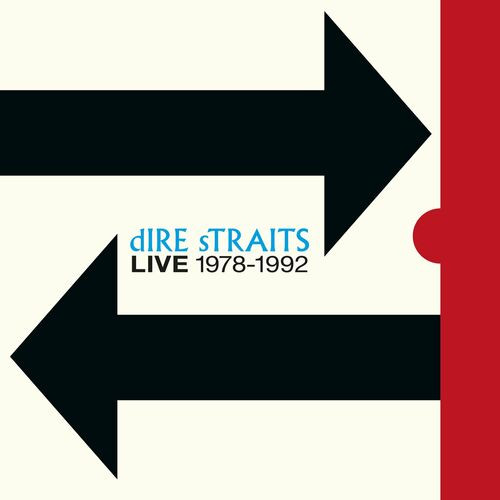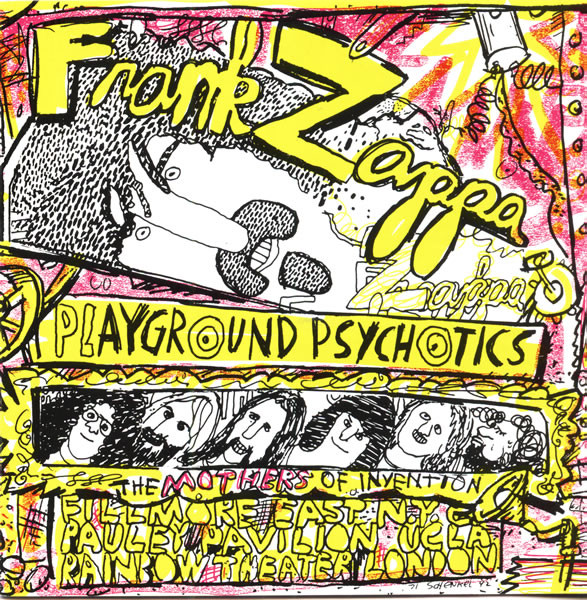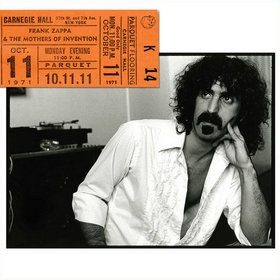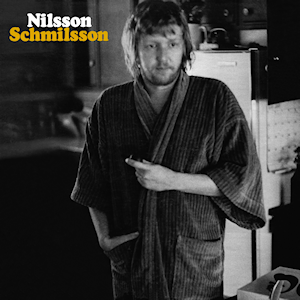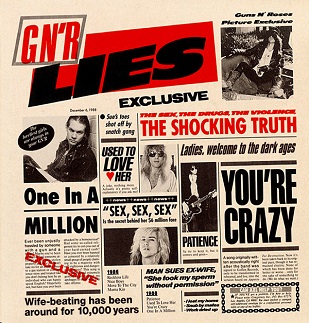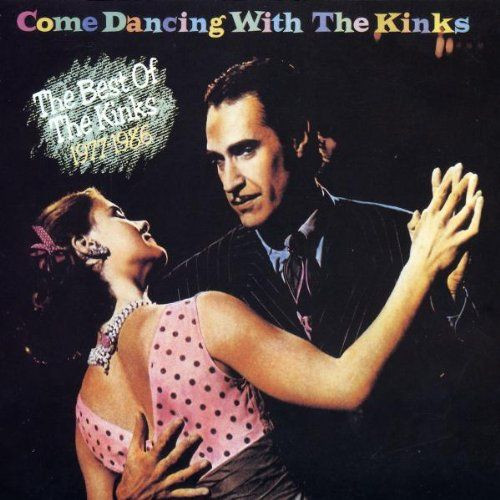After preparing and releasing twelve hours of music collated from his entire career, Frank’s next big project was dedicated to the Flo & Eddie era of the band.
Playground Psychotics combined field recordings with concert excerpts to provide a widescreen portrait of what he called “A Typical Day On The Road”.
Each disc starts with several minutes of indexed dialogue captured by his trusty portable tape recorder, capturing the band and roadies in conversation on planes, in hotels, and backstage. One segment is an interview with the manager of the hotel where the infamous “mud shark incident” took place. “Diptheria Blues” is a dressing room jam featuring Aynsley Dunbar on whiskey bottle. Much of the humor, onstage and off, is clearly visual, so lovers of in-jokes and bathroom humor will be in heaven. Things get truly nutty when we get to hear tape recordings featuring playbacks of recording captured on other band members’ tape recorders, culminating in the closing segment on disc two. Some of this was excerpted from the videotape The True Story Of 200 Motels, briefly documenting the cause and result of Jeff Simmons quitting the band, not wanting to be fodder for Frank’s thesis at the expense of his musicianship.
The musical excerpts are far more interesting, with further songs from the Rainbow Theater show that ended with Frank being knocked off stage, which we don’t get to hear here. While the Pauley Pavilion is listed as another source, the only music heard from that show is a short “Divan” segment of what would become “Sofa”. Instead, much of the music comes from the Fillmore stint, including older songs and a thirty-minute “Billy The Mountain” (cobbled together from two shows) that’s actually listenable. One of the key selling points of this album outside the Zappa faithful is an alternate mix (and edit) of what Beatle fans knew as side four of John & Yoko’s Some Time In New York City, documenting their guest appearance with the Mothers. Despite being given such new song titles as “Aaawk” and “A Small Eternity With Yoko Ono”, “Well” is still the only segment of true musical appeal.
Because of the anthropological approach,
Playground Psychotics will be mostly of interest to fanatics who can stomach Flo & Eddie. While cramming several months of material into two CDs is no small feat, a larger context was certainly needed. Sure enough, the band’s two sets at Carnegie Hall in October 1971 were released in a four-CD package forty years later, in decent-sounding mono and including a performance by the doo-wop combo and support act The Persuasions. (
Carnegie Hall was reissued a little over eight years later as a three-disc set that omitted the Persuasions segment.) Hearing the transitions and dynamics as played shows just how hot the band was, but you also have to endure the vocalists’ attempts at humor. “Magdalena” is even more repulsive here, and 15 minutes are devoted to “The Mud Shark”. There’s a more complete “Divan” suite (including “Stick It Out”, eight years before
Joe’s Garage) with lots of four-letter words in English and German. Beyond that, “King Kong” runs a half an hour to accommodate solos—though it abandons the 3/8 meter after the first minute or so—and “Billy The Mountain” is now up to 47 minutes.
That was all well and good, but connoisseurs would be even more sated ten years after that by
The Mothers 1971. This eight-CD set encompassed all four unedited Fillmore sets (including John & Yoko, unexpurgated) and the complete Rainbow show, with another sixteen songs from Scranton and Harrisburg in between to present a sort of virtual concert. With so many repeats of the material, “Billy The Mountain” emerges as a major if silly work, and we can almost start to appreciate the musicality of the “Shove It Right In” suite; it’s just too bad that the lyrics are so puerile. If you want to hear a ribald take on “My Boyfriend’s Back”, here’s your chance. Turns out Don Preston only played on the encores at the Fillmore, which certainly helped cool Frank’s otherwise petulant mood. Don’s fully on board at the Rainbow, leading the opening “Zanti Serenade”, extended for another ten minutes here. “Wonderful Wino” is still in the set, and the encore was “I Want To Hold Your Hand”, after which we can actually hear Frank hitting the concrete floor.
Frank Zappa/The Mothers Playground Psychotics (1992)—2
Frank Zappa & The Mothers Of Invention Carnegie Hall (2011)—2½
The Mothers The Mothers 1971 (2022)—2½


